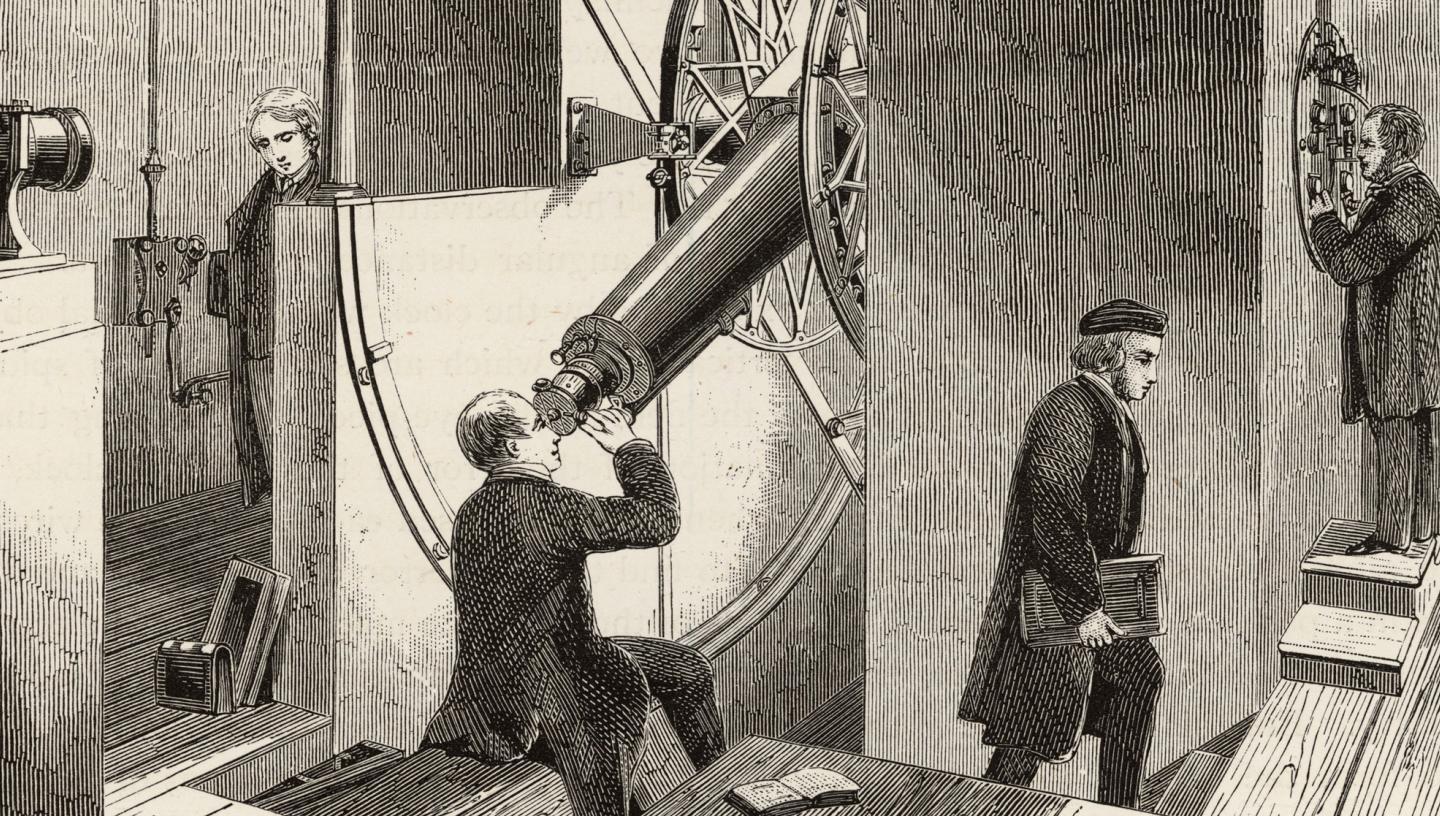
Meridian astronomy
Meridian astronomy is the meticulous surveying of the stars so that positions and movements of stars can be known accurately.
What is meridian astronomy?
Meridian astronomy is the branch of astronomy concerned with making accurate measurements of positions (right ascension and declination) in the sky. Over time, this can also show the movements of stars. Meridian astronomy can be compared to cartography: the careful surveying of what is where (and when). This data is then used by many other astronomers to test theories or open new avenues of research.
How is meridian astronomy done?
The meridian astronomer uses a special telescope called a transit circle. The transit circle is pivoted in one direction only, with its cross axis supported by two fixed piers, east and west of the telescope. This means that it can look south, overhead, north, straight down, or at some slanting angle north or south. It lives in a rectangular house, with shutters that can open in the north and south walls, and more shutters in the roof that can open along the north-south centre-line. It does not follow the moving stars, but just watches them go by.
While a star is passing by, the observer has to measure two things. They observe accurately the time at which the star passes due north or south, that is, the time at which it crosses their meridian. They also measure the angle to which they have to tilt the telescope to see the star, that is, the elevation or altitude of the star as it crosses their meridian. From the observed time they can work out the star's right ascension and from the observed altitude angle they can work out the star's declination.
Probably the world's foremost Meridian Telescope
The Carlsberg Meridian Telescope was made in 1952 to the same specification as the Cooke Reversible Transit Circle (in operation at the Royal Observatory until 1982). It was decided to move the telescope to a better site than its then base in Denmark in 1983 and it was refurbished before shipping to the Roque de Los Muchachos Observatory on La Palma in the Canary Islands in August 1983.
The telescope was upgraded a number of times but has now been decommissioned and the Instituto de Astrofisica de Canarias plans to put the telescope in its museum. The last night of observing was in September 2013.
Carlsberg Meridian Catalogue 15 was published at the end of 2013. This is an astrometric and photometric catalogue of the stars and supersedes previous catalogues. This will be of great use to the large telescopes now in operation, which have very small fields of view.
Why do it at all?
Three hundred years ago the Royal Observatory was founded at Greenwich, not to do fancy scientific research, but to solve a very practical problem. That problem was the finding of the longitude of a ship at sea so that it could be navigated properly. This required using the stars as landmarks, or points of known position, and the Observatory started making the necessary observations of star positions.
Since then, astronomy and the positions of stars and planets have been critical in many of the biggest advances in science from Newton’s discovery of gravity to Einstein’s theory of relativity.
Meridian astronomy may be a very old and classical part of astronomy, but it is still very much alive and is making an important contribution to our rapidly increasing knowledge of the universe.
All the data collected by the Carlsberg Meridian Telescope is available online
The Royal Observatory is open daily from 10am